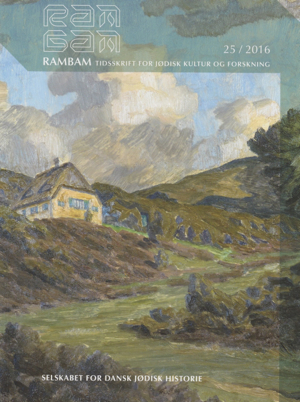Jødiske bosætningsmønstre i København 1682-1801
Resumé
Jewish Patterns of Settlement in Copenhagen 1682-1801
The main basis for this article is a protocol which Josef Fischer, a librarian at the Jewish Community of Copenhagen, made for the Jewish community in 1904-1907. On the basis of tax lists, the protocol shows where the Jews resided in the period from 1682 to1799, placed in their specific houses, streets and quarters. Such tax lists were made almost every year. In 1728, there was, however, a big fire which destroyed almost half of the houses in the city. Afterwards, the citizens were registered, and that registration clearly shows that the number of Jews actually living in the city of Copenhagen were much higher than the number registered on the tax lists. But even so, there is no basis for not believing, that the areas where the Jews primarily settled were any others than what the tax lists show. In that period, Copenhagen consisted of 12 quarters, and about 85% of the Jews settled in only three of these quarters, namely the quarters nearest to the royal castle. And this pattern of settlement is evident in almost all lists from the 18th century.
In 1787, the first census was made in Denmark; the next one was in 1801. Steen Felding has tallied the number of Jews in these censuses – also for Copenhagen – and they show a higher number of Jews than the taxation lists. In 1787, the total number of Jews in Copenhagen was 1,541. The total population of Copenhagen was 90,032; hence, the Jewish part of the population was 1.71%. But in the quarter called Snaren, the percentage of Jews was 25.2; in Frimand, it was 17.9; in Strand, 16.4; in Vester, 14.5; and in Koebmager, 14.1. Thus, 88.1% of the Jews lived in these five quarters, where they were very visible in the streets.
In 1795, Copenhagen was struck by another big fire. Therefore, the census of 1801 is less reliable as a marker for the Jewish settlement. This census, however, shows a wider dispersion. The total number of Jews has increased to 1,901; the total population, however, had increased to 100,887, making the percentage of Jews 1.88. But of these, only 74.9% lived in the five quarters mentioned above.
Although there was never a ghetto in Copenhagen, it is obvious that the Jews settled close to each other. I have especially counted the Jews in the streets of Laederstraede in the Strand Quarter and Kompagnistraede in the Snaren Quarter – these two streets physically forming one street. In Laederstrade, there were four to five synagogues during the period mentioned. In 1787, the Jews in Laederstraede made up 26.8% of the population; in Kompagnistraede, it was 25%. In 1801, the Jews made up 18.6% of the population of Laederstraede and 19.7% of the population of Kompagnistraede. Thus, these two streets are the closest Copenhagen ever came to a ‘Judengasse’.





